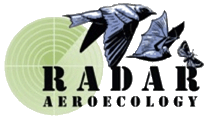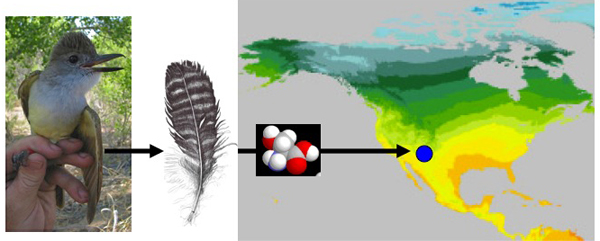
Feather Connections in Migratory Birds
We collect feathers from birds that migrate to use the ratio of stable isotopes in their feathers to understand how breeding, migratory, and wintering season populations are connected. This “connectivity” is a key gap in our knowledge of the basic ecology and evolutionary biology of migrants and filling this gap is essential to creating effective management and conservation plans.
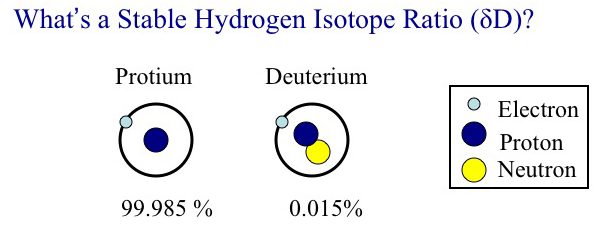
Stable Isotope ratios are the relative amounts of the two stable forms of the same element relative to that ratio in a standard material. Ratios are expressed as parts per thousand (per mil,‰) and a positive values indicates more deuterium that the standard while negative values have less deuterium than the standard.
Since the pioneering work of Chamberlain et al (1997) and Hobson and Wassenaar (1997) there has been a dramatic use of this method in ornithology. This increase is due to the latitudinal signal contained in the ratio of Hydrogen stable isotope in the feather tissues on migrant passerine birds.
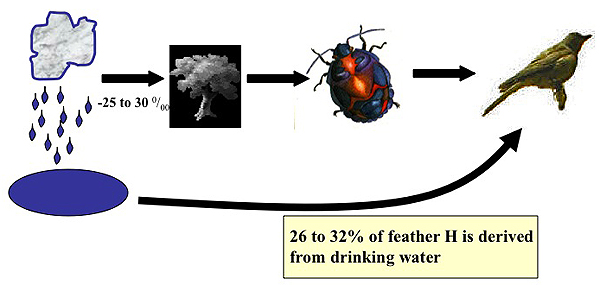
Most of the Hydrogen in birds feathers comes from the food they eat. In the wild this food (in the summer) is a direct product of growing season precipitations. This relationship results in a strong causal relationship between the isotope ratio of local growing season precipitation and the isotope ratios in feathers of passerine birds that are grown in that location.
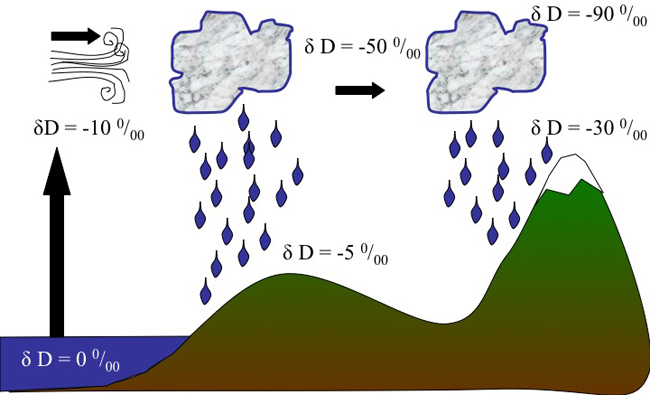
Large relative mass difference between Hydrogen and Deuterium = large kinetic fractionation (e.g., evaporation and condensation).
Global patterns in precipitation reflect evaporation off the oceans, fractionation of Hydrogen isotopes during precipitation events, as well as distance from the coast, elevation, and temperature.
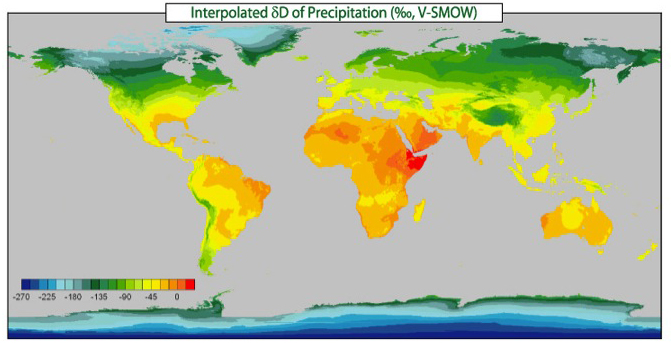
These factors create a predictable pattern in the long-term average isotope ratios in precipitation. Note that in northern North America there is a steep gradient in isotope ratios. This gradient has been very useful in understanding the connectivity of migratory birds.
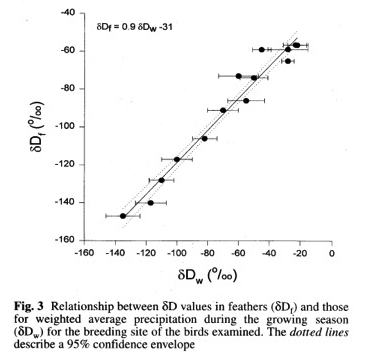
This graph is from the 1997 paper by Hobson and Wassenaar - "Linking breeding and wintering grounds of neotropical migrant songbirds using stable hydrogen isotopic analysis of feathers".
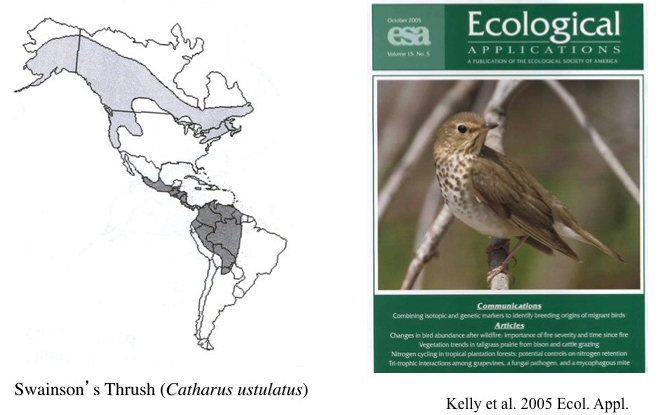
Hydrogen isotope ratios can be integrated with genetic markers to increase the resolution of connectivity; as we did in Swainson’s thrushes.
